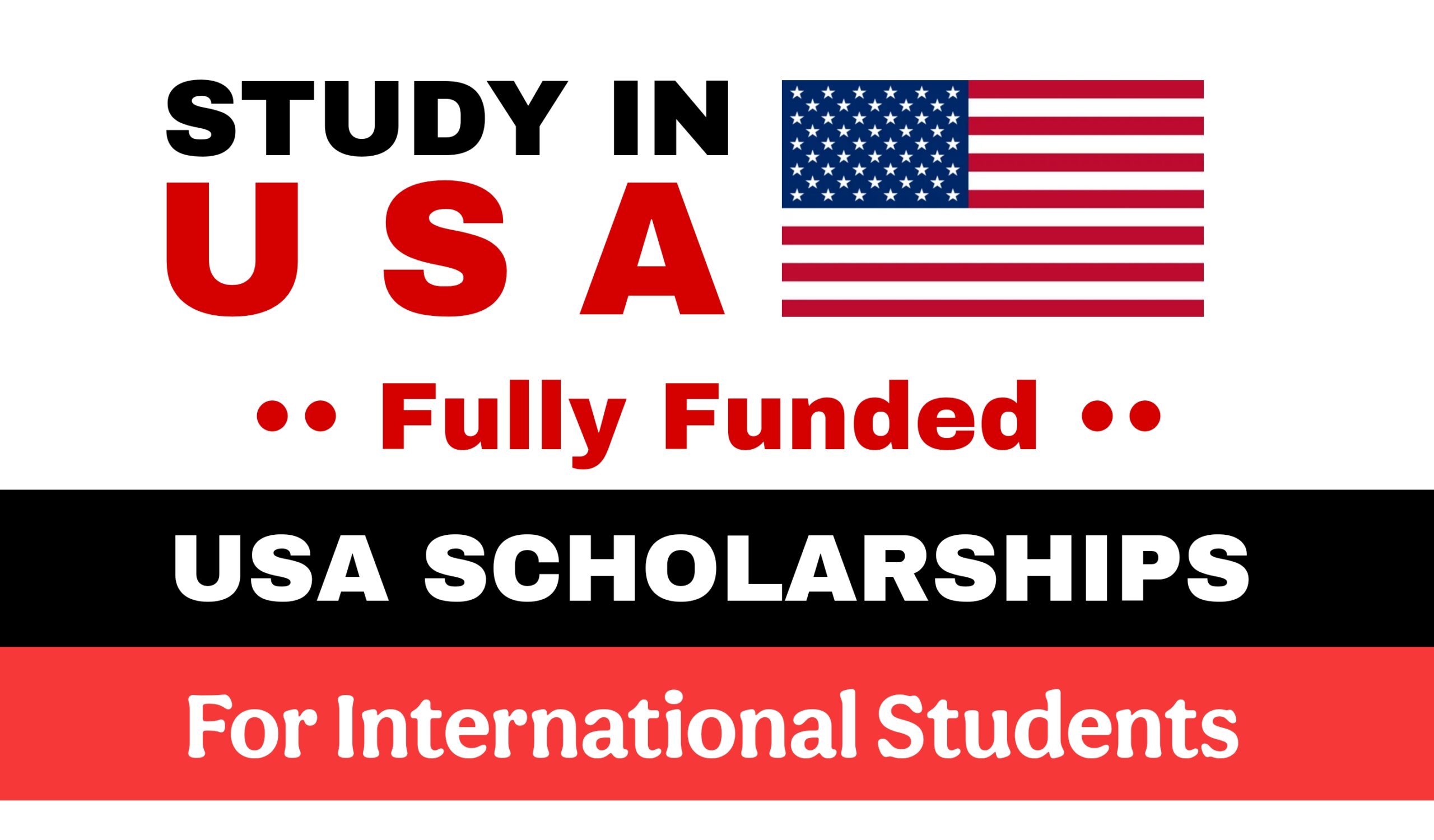Fully funded scholarships in the USA for international students open the door to world-class education without the financial burden. Every year, thousands of students from around the world receive scholarships that cover tuition, housing, travel, and more, making a U.S. degree more affordable than ever.
Advertisements
In this comprehensive 2025 guide, you’ll learn how to find top scholarships, meet eligibility requirements, and increase your chances of success, whether you’re applying for undergraduate or graduate programs.
Advertisements
Why Choose the USA for Higher Education
- Top-Ranked Institutions: Eight of the world’s top ten universities are in the U.S., including Harvard, MIT, and Stanford.
- Flexible Academic System: Choose your majors and minors and customize coursework.
- Innovation & Research Access: Study at the forefront of scientific, medical, and technological development.
- Career Opportunities: Use Optional Practical Training (OPT) and Curricular Practical Training (CPT) to gain real-world experience.
- Diverse Community: Campuses are multicultural, welcoming students from over 150 countries.
What Fully Funded Scholarships Typically Cover
Most fully funded U.S. scholarships include:
- Tuition and Fees
- Monthly Living Stipend
- Health Insurance
- Travel (Airfare & Visa Costs)
- Housing/Board (in select cases)
- Books and Materials Allowance
These packages ensure you can study without worrying about costs.
Top Fully Funded Scholarships in the USA for International Students
1. Fulbright Foreign Student Program
- Degree Level: Master’s & PhD
- Coverage: Tuition, monthly stipend, travel, health insurance
- Open to: Citizens of over 160 countries
- Website: fulbrightonline.org
2. Hubert H. Humphrey Fellowship Program
- Level: Mid-career professionals (non-degree)
- Duration: 10 months
- Coverage: Full living stipend, travel, insurance
- Website: humphreyfellowship.org
3. AAUW International Fellowships (For Women)
- Level: Graduate & Postgraduate
- Coverage: $20,000 to $50,000
- Open To: Women from outside the U.S.
- Website: aauw.org
4. Knight-Hennessy Scholars (Stanford University)
- Level: All graduate programs
- Coverage: Tuition, stipend, travel, leadership training
- Website: knight-hennessy.stanford.edu
5. Yale University Scholarships
- Level: Undergraduate & Graduate
- Coverage: Need-based aid averaging $50,000/year
- Website: admissions.yale.edu
6. Harvard University Scholarships
- Level: Primarily Undergraduate
- Coverage: Full tuition, room, and board (for low-income)
- Note: Need-based, not merit scholarships
- Website: college.harvard.edu
7. Clark University Global Scholars Program
- Level: Undergraduate
- Coverage: $15,000 to $25,000/year + paid internship
- Website: clarku.edu
8. Illinois Wesleyan University International Scholarships
- Level: Undergraduate
- Coverage: $10,000 to full tuition (renewable)
- Website: iwu.edu
9. Berea College Full Tuition Scholarship
- Level: Undergraduate (First-Year International Students)
- Coverage: Full tuition + on-campus work
- Note: 10+ hours/week work required
- Website: berea.edu
Other University-Based Fully Funded Scholarships
Here are more U.S. universities offering generous scholarships:
- University of Oregon ICSP Scholarship—tuition remission + cultural service
- Michigan State University Tuition Grant—partial to full tuition
- Wesleyan Freeman Asian Scholars Program—full aid for top Asian students
- University of the South (Sewanee)—full-ride scholarships available
- NYU Abu Dhabi—full scholarships for admitted students
- Amherst College—100% demonstrated need met for all admitted students
- Dartmouth College—generous international aid
- University of Minnesota—Global Excellence Scholarships
- Deep Springs College—free tuition + living for all students
- Columbia University International Fellowships—multiple merit- and need-based awards
U.S. Scholarship Application Timeline
| Stage | Timeline |
|---|---|
| Program announcement | August–September |
| Application opens | October–February |
| Essays/Tests/Interviews | December–March |
| Results notification | March–May |
| Visa application | May–July |
| Classes begin | August–September |
Note: Deadlines vary by scholarship. Always confirm on the official website.
Eligibility & Required Documents
General Requirements:
- Non-U.S. citizenship
- Strong academic record (GPA varies)
- Proof of English proficiency (TOEFL, IELTS, or Duolingo)
- Leadership experience or community engagement
Documents Checklist:
- Valid passport
- Academic transcripts and certificates
- Resume/CV
- Statement of Purpose or Personal Essay
- Letters of recommendation
- Standardized test scores (SAT, ACT, GRE, if needed)
- Financial aid documents (for need-based programs)
How to Write a Winning Statement of Purpose (SOP)
- Understand the prompt—each program may ask different questions
- Show your journey—past challenges, goals, and motivations
- Explain your fit—why this university and program?
- Demonstrate leadership—academic, social, or entrepreneurial
- Link to future impact—how you’ll use this education
- Keep it personal but professional— Be clear, concise, and honest
You can also check How to Write a Strong Scholarship SOP (With Tips, Samples & Strategy)
Tips to Maximize Your Chances of Getting a Scholarship
- Start early—begin researching 8–12 months in advance
- Apply to multiple programs—3–5 at a minimum
- Tailor each application—don’t copy-paste SOPs
- Secure strong recommendation letters from academic/professional mentors
- Follow embassy & EducationUSA updates— They often list exclusive opportunities
- Target lesser-known universities—they offer more aid with less competition
Frequently Asked Questions
Q: Can I get a U.S. scholarship without IELTS or TOEFL?
A: Some universities waive this if your degree was in English or if you accept Duolingo.
Q: What are the best U.S. universities offering full scholarships?
A: Yale, Harvard, Stanford, Berea College, Amherst College.
Q: Do scholarships cover travel and visa expenses?
A: Yes, some, like Fulbright and Knight-Hennessy, do. Others may not.
Q: How competitive are these scholarships?
A: Very. But with the right SOP, early application, and strategy, you can stand out.
Related Reads
- Fully Funded Scholarships for International Students
- Government Scholarships for Asian Students
- Fulbright Scholarship Application Guide
- Scholarships for Women in STEM
- Top Scholarships in Canada
Final Thoughts
A U.S. degree doesn’t have to be out of reach. With the right scholarship, you can access some of the world’s best universities without the financial burden. Whether you’re aiming for undergraduate or postgraduate studies, the key is preparation, persistence, and smart targeting.
Apply early. Tell your story boldly. Your future is funded.
Advertisements

